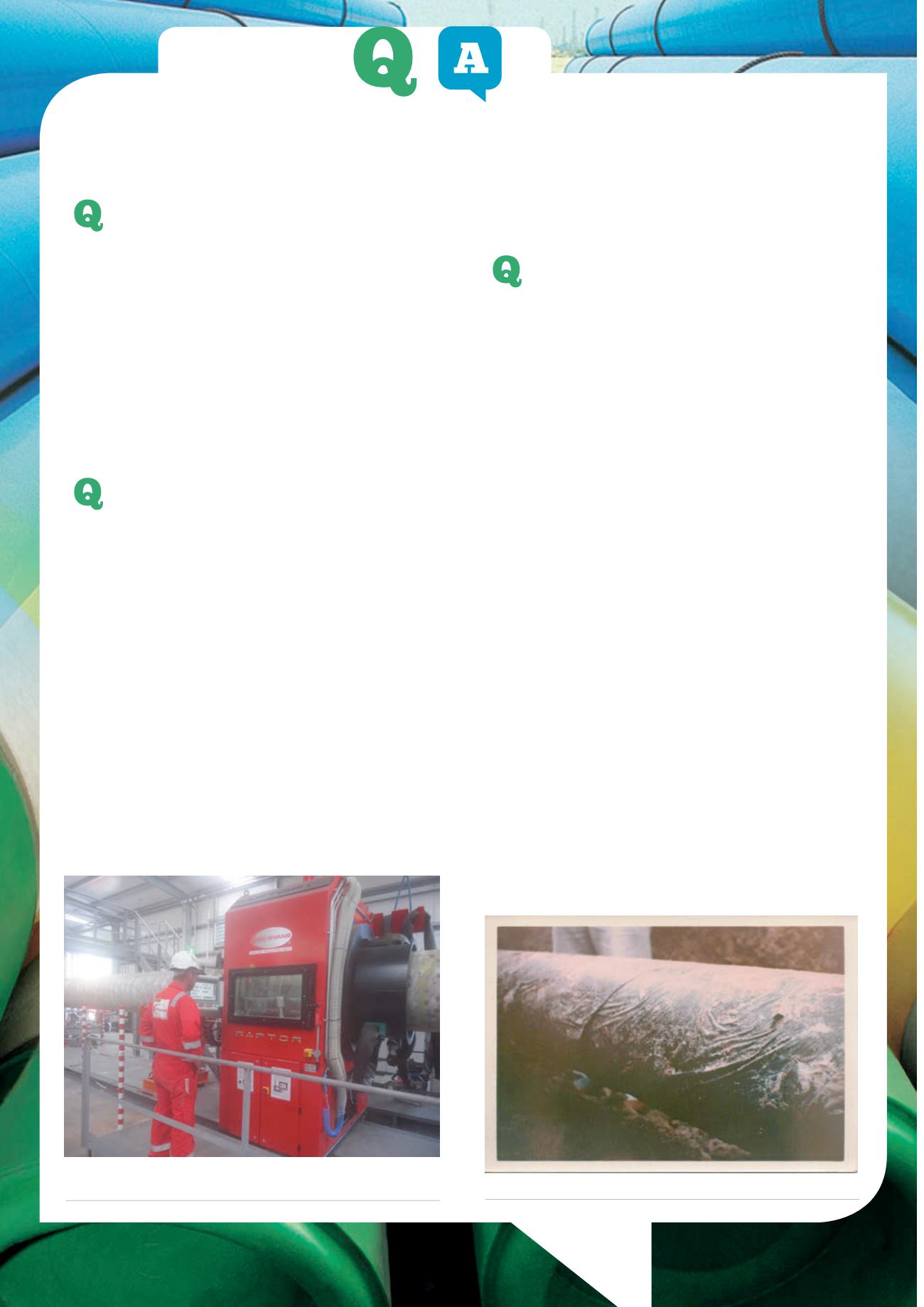
Coatings
&
David Jackson
, CRC-Evans, USA
Has the way you coat pipes changed in
the last ten years? How?
Traditional field joint coating systems are heavily reliant on
operator know-how and skill due to the manual nature of
the application equipment. Although this type of equipment
is still in use today, increasingly clients are demanding more
sophisticated, fully automated equipment with extensive data
logging capabilities.
This new approach minimises the chance of human error,
resulting in a more consistent and higher quality end product.
Combined with full data logging capabilities, this gives the
client the confidence that the product has been applied in
accordance with the relevant specification and ultimately is fit
for purpose.
How would you reassure someone
doubting the efficacy of today’s pipeline
coating systems?
Today’s pipeline coating systems are more than ever before
subject to scrutiny and pre-qualification, both to validate
the suitability of the materials for the installation and service
conditions and for the consistency and adequacy of the
application methods. More comprehensive specifications,
improved material performance, higher standards of training
and automated application methods have all contributed
and complemented each other in delivering a high level of
installed quality and coating reliability.
In recent years, simulated service testing (SST) has been in
demand. In such tests, the coated pipe is filled with heated
fluid to represent the product as it would be in service. The
pipe is then placed inside a chamber containing seawater,
which can be pressurised to simulate the actual hydrostatic
pressure exerted in service. Such expose can last a significant
length of time, 12 months being not unusual. The properties
of the coating are examined after exposure to determine
whether any significant changes in properties of performance
have occurred.
What kinds of problems have led to
coatings failures?
The major causes of coating failure are either disbondment of
the coating from the steel (or from the ‘parent coating’, if it
is a field applied coating overlapping on to it) or mechanical
damage to the coating. These causes can be associated with
poor application or inappropriate material selection for the
installation or service conditions.
A poorly applied coating is considerably more likely to fail
than a well applied coating, and issues leading to this are poor
training, inadequate or poorly maintained equipment, fatigue
and poor or inadequate installation instructions. Examples of
this are:
)
Inadequate surface preparation – If the substrate is not
properly prepared, then the likelihood is that the coating
will not bond properly to it, regardless of how well the
subsequent coating processes are controlled.
)
Lack of control of the application process – If the
substrate it too cold or too hot, or if the coating materials
are not at the right temperature, or not mixed at the
right ratio, or not applied in intimate contact with the
substrate, or inadequate curing or cooling time is allowed,
then it is likely that the coating will be inadequately
bonded or that it will not achieve the properties it is
designed to achieve.
Problems associated with poor application should be
captured by routine quality control during application, but if
this is also lacking, then the problems might not be detected.
Problems due to poor material selection or due to the
specification of inappropriate materials are more likely to find
their way into service simply because they may pass all the
quality control tests during application and installation of the
pipeline. The problems associated with inappropriate material
Figure 2.
Archive photo of failed cold applied tape.
Figure 1.
RAPTOR – PIH’s fully automated heat coat machine
in operation.
46


